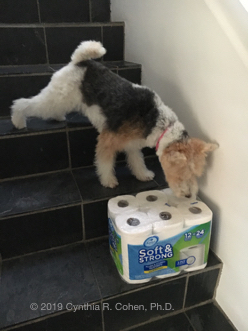
The first step in designing an admissible consumer survey is to properly define the universe of consumers. The relevant legal questions determine the appropriate type of study. Genericness, fame, and dilution studies use the general national consumer population. Likelihood of confusion studies use potential purchasers. When you first think about who uses a product or service, it is the purchasers not the users, who are the decision-makers.
Use of a product does not qualify one for the sample. Only potential purchasers are included in the survey.
Who purchases the client’s product or service? Attorneys should ask the client to help delineate the universe’s potential customers or competition’s customers depending upon whether it is a forward or reverse confusion test. What the clients know about the purchasers’ buying habits, such as how often their potential consumers buy the product or service, helps the survey designer craft appropriate questions.
Consumer Hoarding Affects Frequency of Purchase
Extraordinary hoarding affected buying habits during our recent pandemic. How hoarding affects consumer studies is reflected in the qualifications portion of the survey. For example, what if your trademark infringement case involves a brand of toilet paper that is squeezably soft? If a survey is testing the level of consumer confusion for a toilet paper mark, a normal universe qualifying question, “Have you purchased toilet paper in the last 21 days, or do you plan to purchase toilet paper in the next 21 days?” is affected by the current supply chains and shopping habits. During the time period with nationwide toilet paper hoarding due to fears about the coronavirus and supply chains, frequency of purchasing changed. Keeping household disinfectant supplies on hand, shifted too. During the hoarding period, those with increased impulse buying, forego brand preference in favor of supply availability on the shelves. Depending upon the trademark in question, where one buys the product may be a necessary qualifying question too. Box stores frequently carry their own store branding and may use a less expensive version of a popular brand. Costco shoppers may be more prone to keeping greater supplies on hand at home. Those with limited funds may not be able to acquire or store supplies as readily.
Avoid Under-Inclusiveness and Over-Inclusiveness
Who buys the household items? Is it a family member or someone outside the family? Are consumers using a shopping service that substitutes another brand, if the preferred brand is out of stock? If so, the survey expert needs to consider disqualification. Hoarders, who use shopping services, could be over-included if they allow substitutions in their orders. Allowing substitutions has ramifications about choice and confusion.
A survey expert should avoid under-inclusiveness in the survey population as well. That is, one-time hoarders could be under-included, if time qualifications are too short. With hoarding behavior of common household products, the time qualification for purchase may need to be extended in surveys.
(“Have you purchased toilet paper in the last 60 days, or do you plan to purchase toilet paper in the next 60 days?”) Several factors affect purchasing behaviors. Sorting out the critical variables for defining the universe include the time period that the infringement occurred, the appropriate purchasing time qualification and potentially the degree of hoarding that occurs with the type of product.
